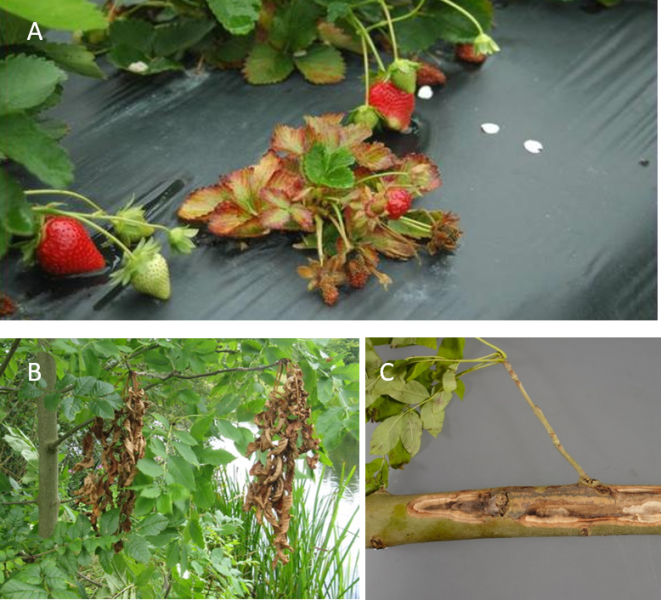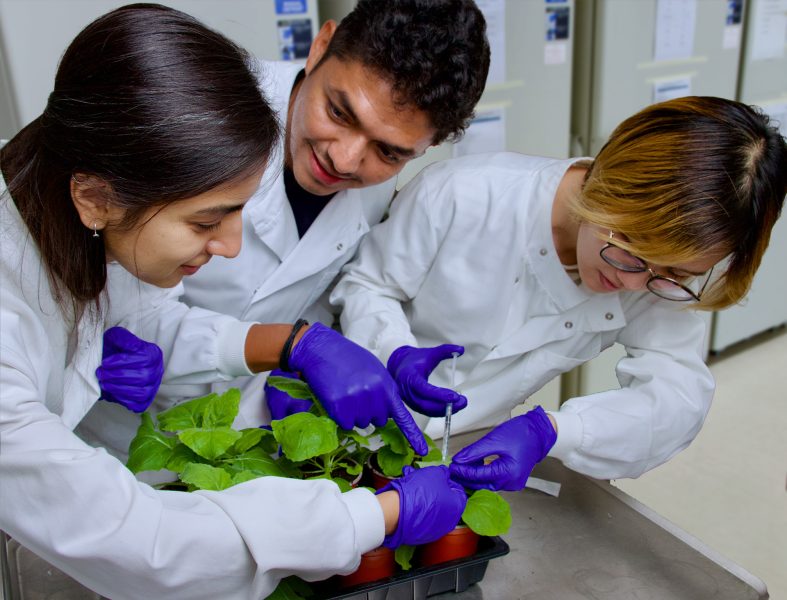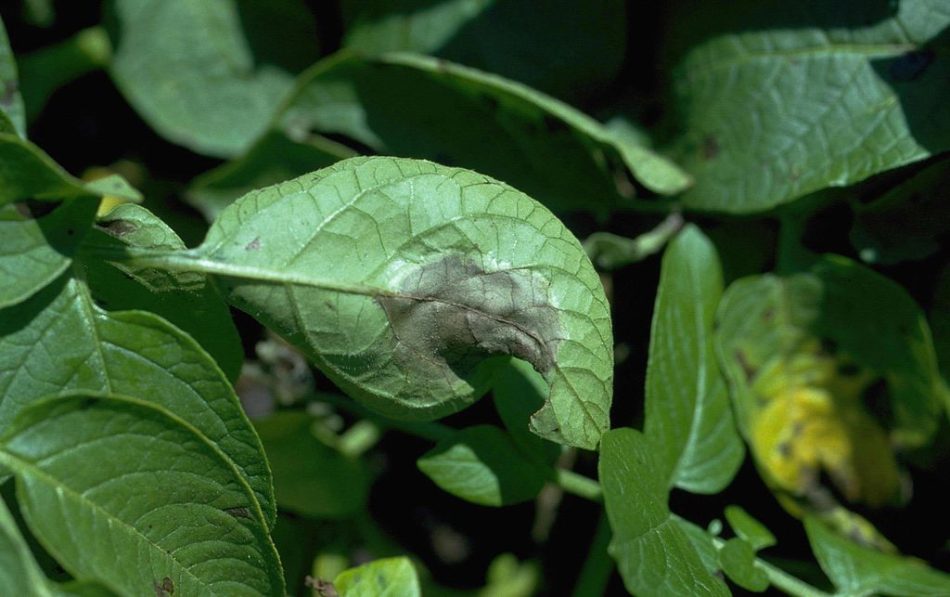Plant pathology: plants can get sick too! Understand article
You may have heard pathology labs mentioned in crime shows, but what is plant pathology? Find out about the feuds between plant and pathogen that span millions of years.
Plants are vital to life on earth. They store energy from the sun, absorb carbon from the atmosphere, and take up minerals from the soil. Plants hold the exciting machinery to create almost everything we need, such as oxygen, medicines, biofuels, clothes, and food.
The yield of the top food crops (corn, wheat, and rice) was 2.5 billion tons in 2021.[1] Over five billion people on the planet, along with farm animals, rely on them as staple foods. These crops are often the product of monoculture farming, in which only one crop is grown per field, which poses risks such as increased susceptibility to diseases.
Plants can get sick
If you have ever kept a garden or even just walked in the woods, you will have noticed that while most plants look green and healthy, some may look diseased. In addition to environmental damage, plants can be infected by all sorts of pathogens like viruses, bacteria, and fungi. These pathogens can infect all parts of the plants: leaves, shoots, stems, flowers, fruits, roots, or tubers.
Plant diseases have very serious consequences for biodiversity as well as crop production. For example, chestnut blight, caused by the fungus Cryphonectria parasitica, wiped out most of the American chestnut trees, with 3.5 billion trees lost by the end of the 1900s.[2] In 2019, plant pathogens caused 40% of the worldwide losses of maize, potato, rice, soybean, and wheat crops, worth £181 billion globally.[3] This huge economic impact reflects the loss of our food resources as well as the valuable natural resources, such as fresh water, energy, and fertile land, invested in growing these crops.
An example of the risks of monoculture farming is Panama disease. The Gros Michel banana was the main variety grown until the 1950s, when one single fungal pathogen (Fusarium oxysporum) wiped out the entire production crop and forced producers to switch to a resistant variety. Currently, a new outbreak of Panama disease is threatening the new main banana cultivar, Cavendish, after the pathogen evolved to overcome the plant’s disease resistance.[4]
Plant diseases symptoms
Plant diseases cause a variety of symptoms, such as abnormal appearances of leaves, stems, flowers, or fruits. While some diseases kill plants, others just disrupt their growth. For example, the strawberry mild yellow edge virus (SMYEV) stunts the plant’s growth and discolours its leaves, turning them yellow (figure 1A).[5]
Some pathogens can even infect entire trees. For example, ash dieback, caused by the fungus Hymenoscyphus fraxineus, initially infects the leaves of ash trees, causing them to wilt and turn brown (figure 1B). As it spreads it causes lesions (damaged tissue) on the branches and trunks (figure 1C), which will eventually kill the tree by cutting off its water and nutrient transport systems. [6]

A) ©Frank J Louws, used with kind permission. B) M J Richardson/Geograph, CC BY-SA 2.0. C) Courtesy The Food and Environment Research Agency (Fera)/Wikimedia, Crown Copyright.
Certain plant pathogens cause such unique symptoms that they become the subject of art (figure 2). The marks caused by plant diseases can take on a wide variety of shapes and patterns, ranging from unsightly to captivating or even beautiful.

© Helen Pennington, used with kind permission
The Rembrandt tulip is a particularly interesting story: a viral infection in tulips causes striped patterns in the petals, which became highly sought-after during ‘tulip mania’ in the 17th century.[7] Not knowing that these unique tulips were actually diseased, the market quickly became unsustainable because the plants became weaker and weaker after each generation.
Time to fight back!
Plants are constantly exposed to pathogens and spend the majority of their time successfully fighting them off with a strong immune system. Typically, most plants are resistant to most pathogens and disease is the exception rather than the norm. Without the highly efficient immune systems of plants, our planet would not be so green.
What makes the plant immune system so efficient? Plants have developed an innate immune system compose of several layers of defence mechanisms within and on the surface of cells.
The plant immune system
Plants, like animals, have evolved several layers of defence to fight against invaders, which can be compared to a medieval castle. The first layer of defence consists of physical barriers, such as bark and cuticles, which are like moats and walls. Animal mucus and plant glands are like trooping soldiers that provide general and constitutive protection. The second layer of defence, which is activated when the pathogen penetrates the first layers, is the innate immune system that relies on the plant’s ability to detect the pathogen’s presence.
Plants possess an array of receptors that recognize unique features of invading microorganisms and trigger downstream responses. There are molecules specific to pathogens that are not produced in plants, such as flagellin (specific to bacteria) or chitin (from fungal cell walls). These compounds are detected by plant receptors located either on the surface of or inside plants cells, and alert the plant to the presence of a foreign invader. The defence responses triggered by activated receptors include the production of toxins and pathogen-degrading enzymes. We also usually observe hypersensitive cell death, in which a restricted area of cells will collapse to confine pathogens from spreading. This can be interpreted as a form of self-destruction to protect neighbouring healthy cells.
Plants do not have specialized immune cells like animals. Instead, each plant call is able to react autonomously. Additionally, plants do not have the ability to develop immunity against new pathogens during their lifetime, like humans and animals do. The capacity of plants to resist diseases is predetermined in their genetic information and present in every cell. A sprouting seed contains all the information necessary to fight the diseases it will encounter throughout its life. This is called innate immunity.
While this innate immunity has served plants well throughout the ages, it does expose a big weakness when pathogens evolve ways to bypass the plant’s security system, as with the banana and Panama disease. Plants often evolve to become resistant again, but this takes generations of natural selection. This evolutionary arms race between plant and pathogen has been happening for millennia, much longer than humans have been on this planet.
Developing new resistance can take years for a wild plant, but farmers cannot wait that long when important crops are at risk. Collaboration between farmers and scientists is crucial in comprehending and managing plant diseases.
How can scientists help?
Plant breeding is the science of improving plants by introducing new traits or discarding unwanted ones. This has been done since the beginning of agriculture by farmers and gardeners and is one of the ways scientists can help.
Classical breeding involves selecting two varieties, each with a trait of interest, and crossing them to obtain descendants with a mix of traits from the parent plants. Breeders then select the plants that contain both desired traits. For example, a disease-resistant tomato plant can be crossed with a susceptible tomato plant that produces larger tomatoes. The desired outcome in this situation would be to create a tomato plant that is resistant to disease and produces larger tomatoes. However, such crosses can be unpredictable and take years to produce stable plants with the desired traits. Major advances in genetic technologies in the last decades can allow scientists to be more targeted in their approach and expedite the process.
Image: Andrew Davis
Recently, scientists have been able to drastically reduce the time needed by introducing genetic changes directly in a targeted manner. Genetic modifications can be classified into two categories: genetic engineering and gene editing.
Genetic engineering, also commonly called genetic modification (GM) or transgenesis, involves transferring DNA from one species to another, either from a related crop or another species. These modified crops must undergo stringent safety tests and regulations before market release.
Gene editing is a more precise method of modifying a plant’s DNA, allowing for targeted changes without introducing foreign DNA. This yields results similar to conventional breeding, but much faster. However, the question of whether gene-edited plants are comparable to genetically modified plants remains open.
Although viruses are the most common source of infection for humans, the majority of serious plant diseases arise from fungal pathogens and fungus-like oomycetes. These pathogens thrive in hot and humid conditions, which is increasingly problematic due to climate change. To preserve the diversity of crop plants, scientists are exploring sustainable approaches to manage plant diseases and reduce our dependence on chemical controls. This may include breeding disease-resistant crops or developing natural compounds to combat plant pathogens, but may also include agricultural practices such as crop rotation, sanitation, and other management techniques to control the spread of plant diseases.

Image: Stephen Bornemann
A combination of approaches is often needed for robust and sustainable disease management in different areas of the world. Plant research encompass all aspects of plant life, and plant scientists continue to work hard to expand the number of options available to farmers.
References
[1] OECD data on crop production: https://data.oecd.org/agroutput/crop-production.htm
[2] Fisher MC, et al. (2012) Emerging fungal threats to animal, plant and ecosystem health. Nature 484: 186–94. doi: 10.1038/nature10947
[3] He S, Creasey Krainer KM (2020) Pandemics of People and Plants: Which is the Greater threat to Food Security. Molecular Plant 13: 933–934. doi: 10.1016/j.molp.2020.06.007
[4] The pathogen fusarium wilt is creating a new banana pandemic in an article in the European Research & Innovation Magazine: https://ec.europa.eu/research-and-innovation/en/horizon-magazine/calling-natural-defences-turn-back-banana-pandemic
[5] An NC State Extension Publications on viruses affecting strawberries: https://content.ces.ncsu.edu/strawberry-mottle-smov-of-strawberry
[6] The Ash Dieback information page on the UK Forest Research organization website: https://www.forestresearch.gov.uk/tools-and-resources/fthr/pest-and-disease-resources/ash-dieback-hymenoscyphus-fraxineus/
[7] The real story of the mid-1600s Dutch tulip mania: https://www.history.com/news/tulip-mania-financial-crash-holland
Resources
- Read a short article about plant immunity.
- Watch a short animation on the history of research into plant immunity and our current understanding of plant immunity networks.
- Learn about the science of plant immune systems in more detail.
- Learn how to make statistical evaluations to measure plant growth: Brown J, Karamurzina S, Zharylgasin S (2020) Grow your own statistical data. Science in School 50.
- Use thin-layer chromatography in your class and discover the pigments that give leaves their colour: Tarragó-Celada J, Fernández Novell JM (2019) Colour, chlorophyll and chromatography. Science in School 47: 41–45.
- Discover how a plant’s internal ‘clocks’ help them to respond to changing day–night cycles: Hubbard K (2019) How plants beat jet lag. Science in School 48: 8–11.
- Read about the beneficial effects of tree canopies: Guerrieri R (2019) The secret life of forests. Science in School 46: 20–24.
- Extract the rubber from the roots of the Russian dandelion: Göbel M, Gröger M (2018) Turning dandelions into rubber: the road to a sustainable future. Science in School 43: 31–36.
- Read about cellulose and its multiple uses: Römling U (2017) Cellulose: from trees to treats. Science in School 41: 8–12.






